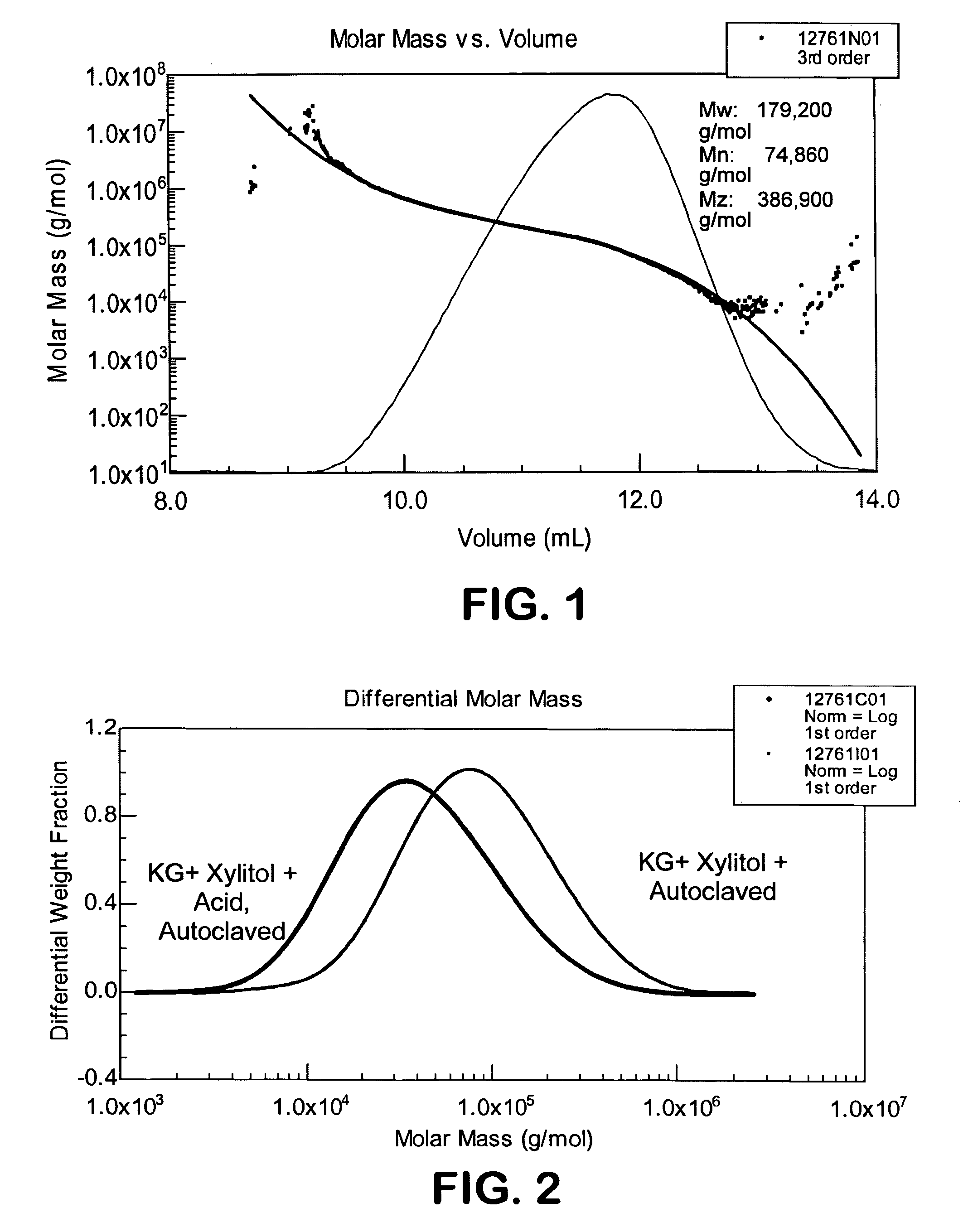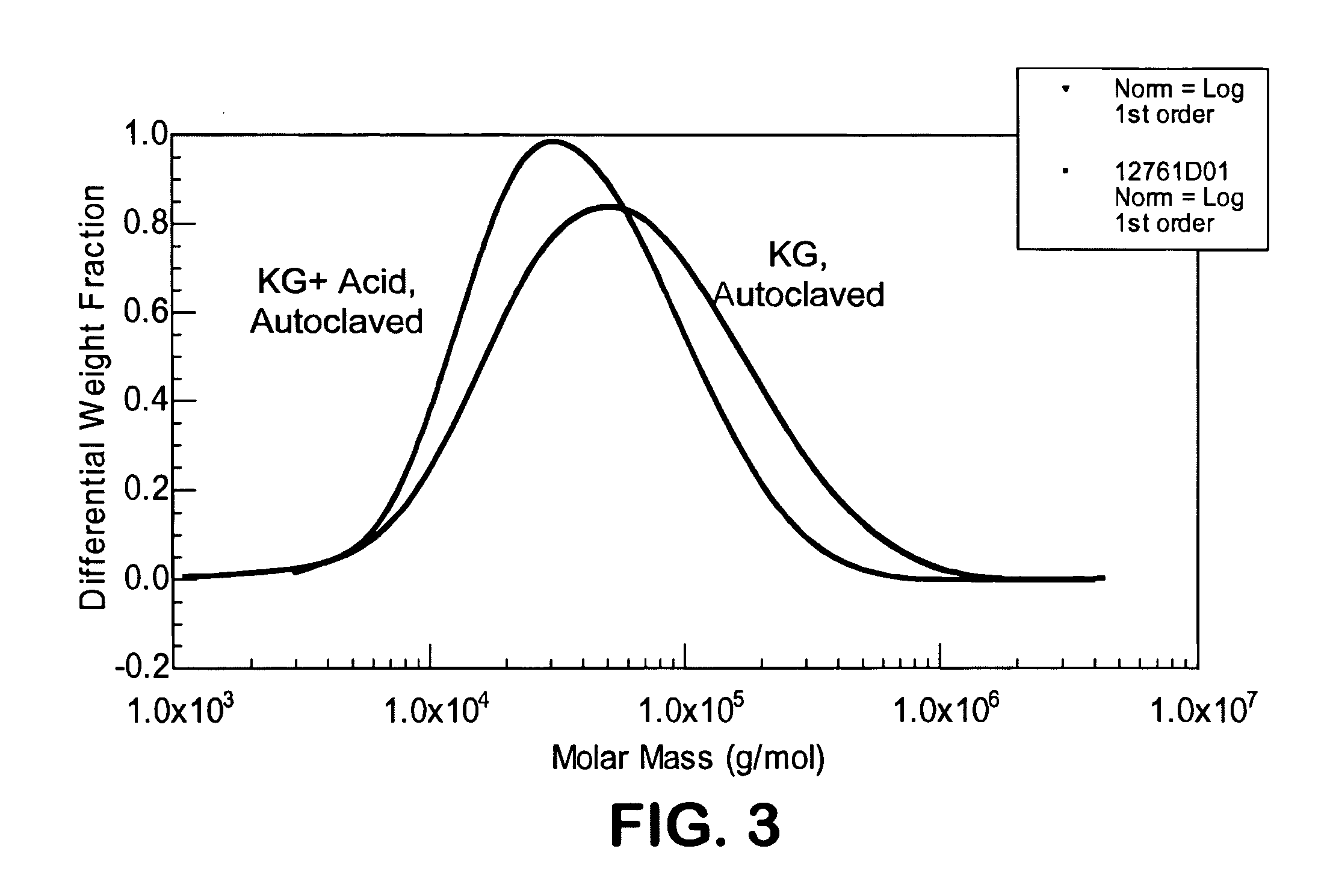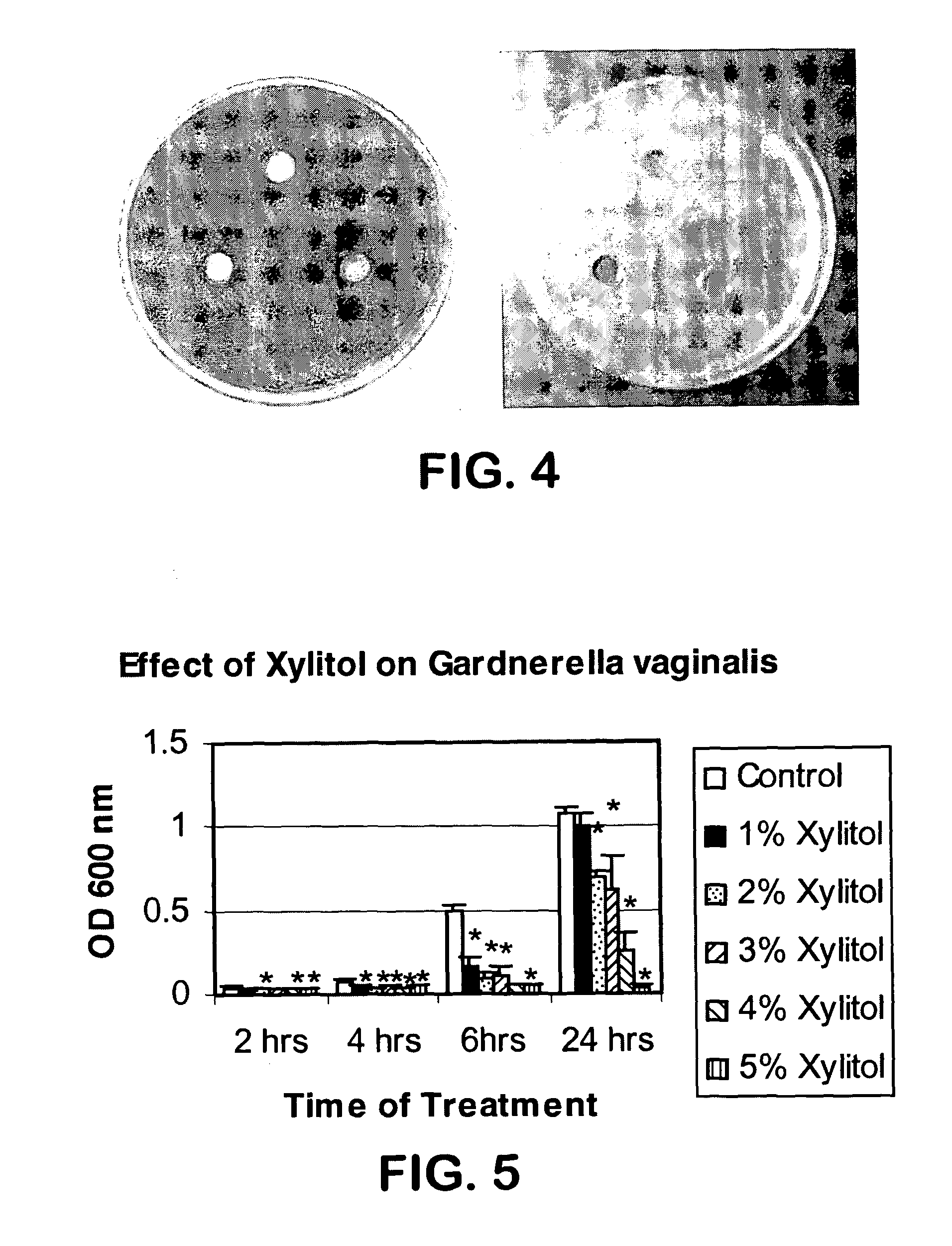Vaginal treatment composition containing xylitol
a technology of xylitol and treatment composition, which is applied in the direction of drug compositions, contraceptives, antibacterial agents, etc., can solve the problems of complicated infection, easy upset of vaginal balance, and inability to use antibiotics
- Summary
- Abstract
- Description
- Claims
- Application Information
AI Technical Summary
Benefits of technology
Problems solved by technology
Method used
Image
Examples
example 1
[0092]Vaginal treatment composition samples were formed from a gellan gum obtained from CP Kelco U.S., Inc. of Chicago, Ill. under the name KELCOGEL®. The samples contained varying amounts of the KELCOGEL® gum (i.e., 0.1%, 0.2%, 0.3%, 0.4%, 0.5%, 0.6%, and 0.7% (wt / vol)) and were formed by dissolving the powder in deionized water heated to 75° C. After cooling to room temperature, 500 microliter-aliquots of the solutions were added to glass vials. After heating to body temperature (i.e., 37° C.), “SVF” was then added to the glass vials. “SVF” refers to simulated vaginal fluid and was prepared according to the recipe outlined in Owen, D. H. and Katz, D. F., A Vaginal Fluid Simulant, Contraception, 59, 91-95 (1999). The volume of SVF added varied from 50 microliters to 500 microliters, at 50-microliter increments.
[0093]The gelation and thickening properties of each sample was observed initially and after 24 hours. The addition of SVF to the 0.1%, 0.2%, and 0.3% (wt / vol) KELCOGEL® samp...
example 2
[0094]A first solution of 0.4% (wt / vol) KELCOGEL® and 150 microliters of SVF was prepared as described in Example 1. A self-supporting gel immediately formed, and was then incubated overnight at 37° C. in a water bath. In addition, a second solution was prepared in a glass vial and immediately incubated overnight at 37° C. prior to forming a gel. The following day, both glass vials were removed from the water bath. The gel formed from the first solution exhibited no signs of viscosity decrease or gel breakdown after incubation. Additionally, the second solution was also observed to have formed a self-supporting gel after incubation, thereby suggesting that body temperature did not negatively impact the ability of the solution to form a gel.
example 3
[0095]Solutions were formed from xylitol and a gellan gum obtained from CP Kelco U.S., Inc. of Chicago, Ill. under the name KELCOGEL®. The solutions contained 0.7% (wt / vol) of the KELCOGEL® gum and 4.4% (wt / vol) xylitol, and were formed by dissolving 0.07 grams of the polymer powder and 0.44 grams of xylitol into 10 milliliters of water at a temperature between 70° C. to 80° C. After vortexing the solutions to help dissolve the solids, they were allowed to cool to room temperature. After cooling, the pH of the solutions was adjusted using varying amounts of either acetic acid or lactic acid.
[0096]The osmolarity of the solutions was estimated using the following equation:
Ocomposition=ΣOspecies
[0097]wherein,
[0098]Ospecies is the osmolarity of a species in the composition. The osmolarity of a particular species is likewise determined using the following equation:
Ospecies=[c / m]×n×φ×1000
[0099]wherein,
[0100]c is the concentration of the species, in grams per liter;
[0101]m is the average ...
PUM
| Property | Measurement | Unit |
|---|---|---|
| temperature | aaaaa | aaaaa |
| body temperatures | aaaaa | aaaaa |
| body temperatures | aaaaa | aaaaa |
Abstract
Description
Claims
Application Information
 Login to View More
Login to View More - R&D
- Intellectual Property
- Life Sciences
- Materials
- Tech Scout
- Unparalleled Data Quality
- Higher Quality Content
- 60% Fewer Hallucinations
Browse by: Latest US Patents, China's latest patents, Technical Efficacy Thesaurus, Application Domain, Technology Topic, Popular Technical Reports.
© 2025 PatSnap. All rights reserved.Legal|Privacy policy|Modern Slavery Act Transparency Statement|Sitemap|About US| Contact US: help@patsnap.com



